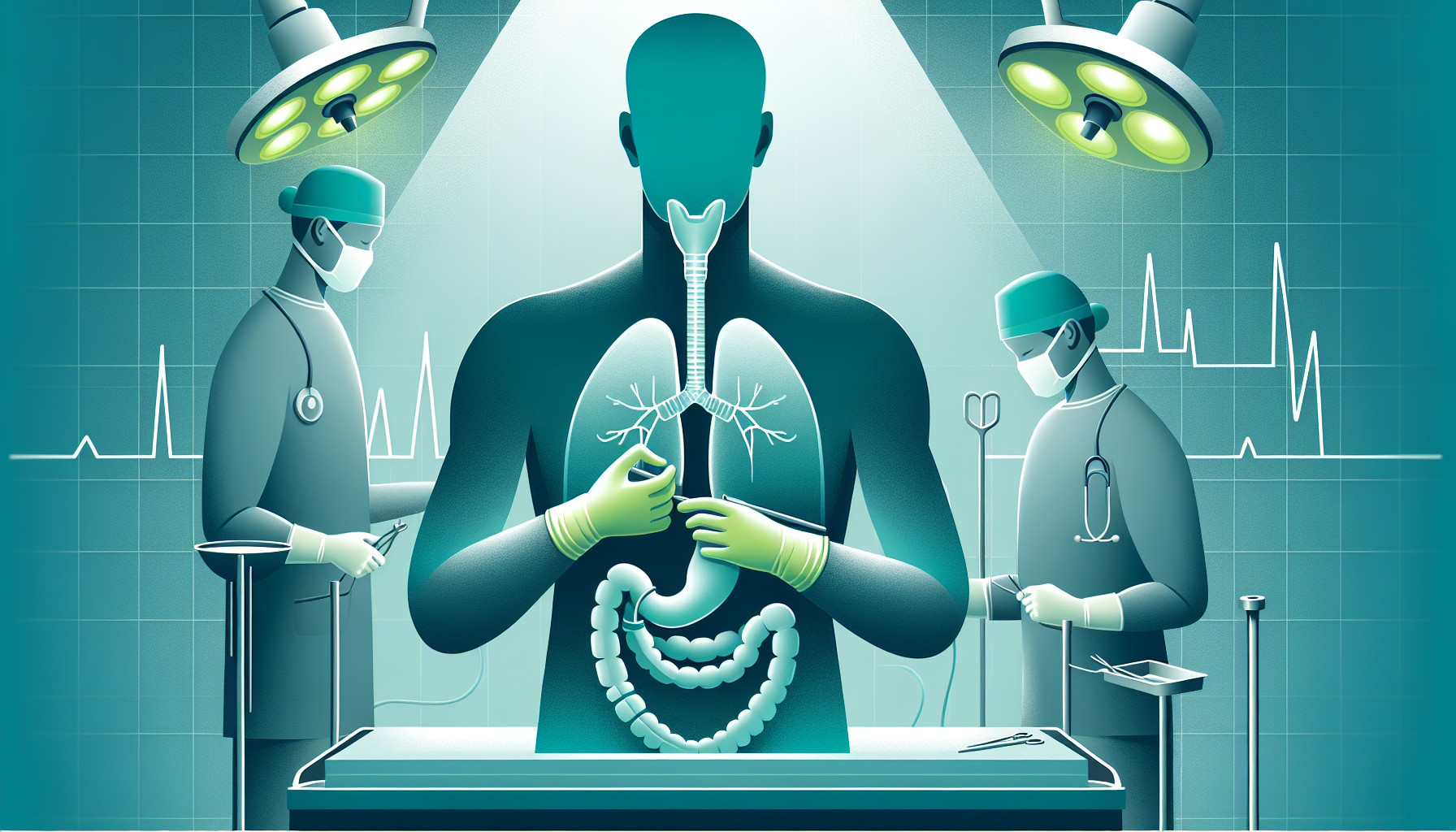Our Summary
This research paper looks at how survival rates for esophageal cancer have improved over the past 40 years. This improvement is likely due to a number of factors, including better staging (the process of determining how much cancer is in the body and where it’s located), better surgical outcomes, advances in treatments that are given before and after surgery, and the increasing use of multiple forms of treatment.
Surgical removal of the esophagus is still the primary treatment for localized esophageal cancer, and there are multiple methods for doing this surgery. Some surgeons prefer to do the surgery through the chest (transthoracic), while others prefer to do it through the abdomen (transhiatal).
Some argue that the transthoracic method allows for a more comprehensive removal of cancerous lymph nodes, while others argue that the transhiatal method has a lower risk of complications and death. However, the paper suggests that the superiority of one method over the other isn’t clear, and may not be relevant in the era of minimally invasive surgery.
The paper also suggests that, with the growing acceptance of pre- and post-surgery treatments, both surgical methods have been shown to have acceptable outcomes. In the hands of experienced surgeons, both methods can provide excellent short-term results.
Furthermore, the paper points out that the skill of the surgeon and the volume of surgeries a hospital performs are strongly linked with improved surgical complications and cancer outcomes, which might be more important than the surgical approach chosen for an individual patient.
FAQs
- What are the different techniques of esophagectomy used in the treatment of esophageal cancer?
- How has the survival rate for esophageal cancer improved over the past four decades?
- How does the surgeon and hospital volume impact the outcomes of esophagectomy?
Doctor’s Tip
One helpful tip a doctor might tell a patient about esophagectomy is to choose a surgeon and hospital with a high volume of experience in performing this procedure. Research has shown that surgeon and hospital volume are strongly associated with improved operative morbidity and oncologic outcomes. Therefore, selecting a highly experienced team can increase the likelihood of a successful outcome following esophagectomy.
Suitable For
Patients who are typically recommended esophagectomy include those with localized esophageal adenocarcinoma who have not responded to other treatment options such as chemotherapy or radiation therapy. Patients who are generally healthy enough to undergo surgery and can tolerate the potential risks and complications associated with esophagectomy are also candidates for this procedure. Additionally, patients who have a good prognosis and are deemed likely to benefit from surgical resection may be recommended for esophagectomy. It is important for patients to discuss their individual case with their healthcare provider to determine if esophagectomy is the best treatment option for them.
Timeline
Before esophagectomy:
- Patient is diagnosed with esophageal cancer through imaging tests, endoscopy, and biopsy.
- Patient undergoes staging tests such as CT scans, PET scans, and endoscopic ultrasound to determine the extent of the cancer.
- Patient may receive neoadjuvant therapy such as chemotherapy and/or radiation to shrink the tumor before surgery.
- Patient undergoes preoperative evaluations and consultations with the surgical team to discuss the procedure and potential risks.
After esophagectomy:
- Patient undergoes the esophagectomy procedure, which can be either transthoracic or transhiatal approach.
- Patient may experience postoperative complications such as infection, leakage at the surgical site, or difficulty swallowing.
- Patient is monitored closely in the hospital for recovery and to manage any complications.
- Patient undergoes rehabilitation and physical therapy to regain strength and function.
- Patient may require a special diet or feeding tube while the esophagus heals.
- Patient undergoes follow-up appointments and monitoring to check for recurrence of cancer and to manage any long-term side effects of the surgery.
What to Ask Your Doctor
- What are the potential risks and complications associated with esophagectomy?
- What is the expected recovery time and rehabilitation process after esophagectomy?
- How will my diet and eating habits need to change after the surgery?
- What type of follow-up care and monitoring will be necessary after the surgery?
- What are the long-term outcomes and survival rates for patients who undergo esophagectomy?
- Are there any alternative treatment options or approaches that should be considered?
- How many esophagectomy procedures have you performed, and what is your experience with this surgery?
- Will the surgery be performed using traditional open surgery or minimally invasive techniques?
- How will my quality of life be impacted after the surgery, and are there any support resources available for managing these changes?
- What are the key factors that will influence the success of my surgery and recovery process?
Reference
Authors: Namm JP, Posner MC. Journal: J Laparoendosc Adv Surg Tech A. 2016 Oct;26(10):752-756. doi: 10.1089/lap.2016.29009.jpn. Epub 2016 Aug 22. PMID: 27548444
